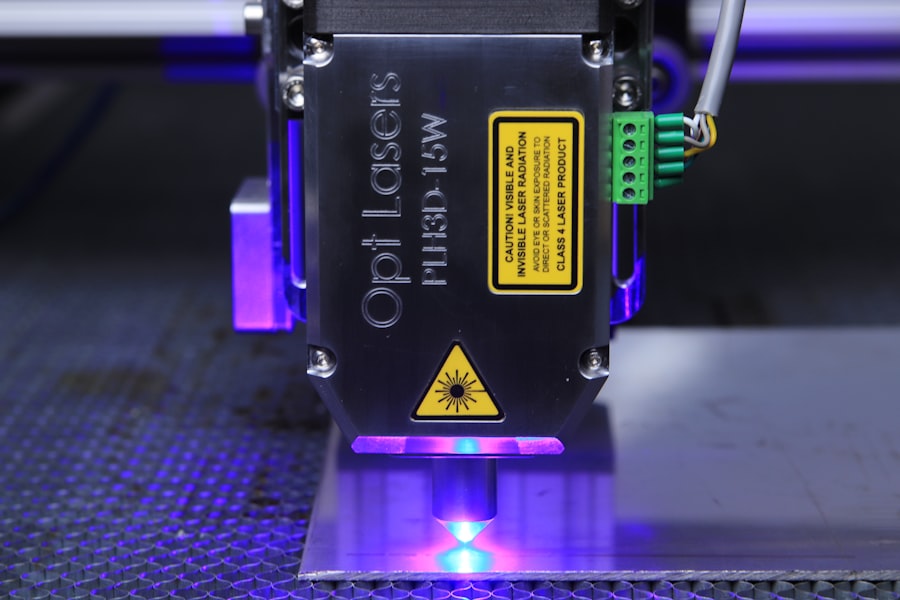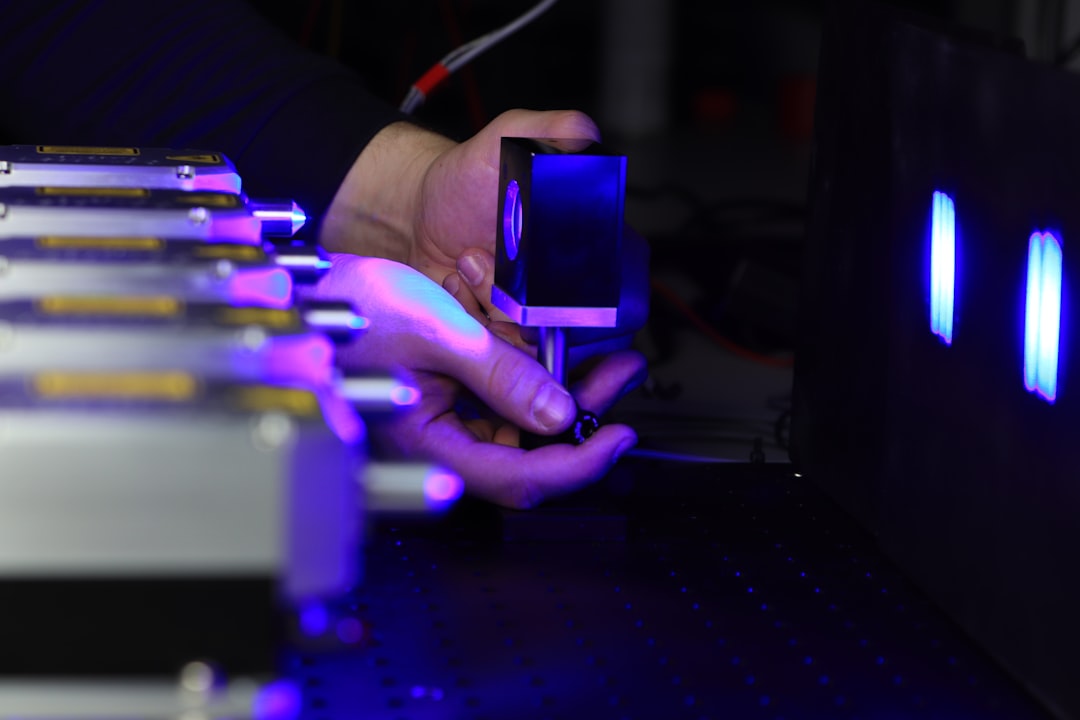Laser hair removal is a popular cosmetic procedure that uses concentrated beams of light to remove unwanted hair. The laser targets the pigment in the hair follicles, heating them up and damaging the follicles to inhibit future hair growth. This process is effective for both small and large areas of the body, including the face, legs, arms, underarms, and bikini line. The procedure is typically performed by a trained technician or dermatologist in a medical spa or clinic.
Laser hair removal is a safe and effective method for long-term hair reduction. It is important to note that it is not a one-time treatment, as multiple sessions are required to achieve the best results. The number of sessions needed varies depending on the individual’s skin type, hair color, and the area being treated. It is also important to follow the pre-treatment and post-treatment care instructions provided by the technician to ensure the best outcome.
Overall, laser hair removal is a convenient and efficient way to achieve long-lasting hair reduction. It is important to consult with a qualified professional to determine if you are a good candidate for the procedure and to discuss any concerns or questions you may have.
Key Takeaways
- Laser hair removal uses concentrated light to target and destroy hair follicles, resulting in long-term hair reduction.
- During laser hair removal, patients can expect to feel a snapping sensation and mild discomfort as the laser targets the hair follicles.
- Factors such as skin type, hair color, and the area being treated can affect the level of pain experienced during laser hair removal.
- To minimize discomfort during laser hair removal, patients can consider using numbing creams, taking pain medication, or opting for cooling devices during the procedure.
- Potential side effects and risks of laser hair removal include redness, swelling, and changes in skin pigmentation, but these are usually temporary and can be minimized with proper aftercare.
What to Expect During Laser Hair Removal
During a laser hair removal session, the technician will first cleanse the area being treated and apply a cooling gel to protect the outer layers of the skin. The technician will then use a handheld device to deliver the laser pulses to the targeted area. The sensation of the laser pulses can vary from person to person, with some describing it as a mild discomfort or a snapping sensation, while others may find it more uncomfortable.
The duration of the treatment session depends on the size of the area being treated, with smaller areas such as the upper lip taking only a few minutes, while larger areas like the legs or back may take up to an hour. After the treatment, the technician may apply a soothing cream or gel to alleviate any discomfort or redness.
It is important to note that some individuals may experience temporary redness, swelling, or mild discomfort immediately following the treatment, but these side effects typically subside within a few hours to a few days. It is also important to avoid sun exposure and follow any post-treatment care instructions provided by the technician to ensure optimal results.
Factors that Affect Pain Levels
Several factors can influence the level of discomfort experienced during laser hair removal. One of the primary factors is individual pain tolerance, as some people may be more sensitive to the sensation of the laser pulses than others. Additionally, the location of the treatment area can also impact pain levels, with more sensitive areas such as the bikini line or underarms potentially causing more discomfort.
The type of laser used for the procedure can also affect pain levels. Some lasers have built-in cooling mechanisms to minimize discomfort during treatment, while others may require the use of external cooling devices or gels. The experience and technique of the technician performing the procedure can also play a role in minimizing discomfort, as a skilled technician can adjust the settings of the laser to ensure a more comfortable experience for the patient.
It is important for individuals considering laser hair removal to discuss any concerns about pain levels with their technician and to communicate openly during the treatment session. By addressing these factors, the technician can work to minimize discomfort and provide a more positive experience for the patient.
Tips for Minimizing Discomfort
| Tip | Description |
|---|---|
| Stay Hydrated | Drink plenty of water to keep your body hydrated and reduce discomfort. |
| Proper Posture | Sit and stand with proper posture to minimize discomfort in your back and neck. |
| Take Breaks | Take regular breaks from sitting or standing to avoid muscle fatigue and discomfort. |
| Stretching | Regular stretching can help reduce muscle tension and discomfort. |
| Ergonomic Equipment | Use ergonomic chairs, keyboards, and mouse to minimize discomfort during work. |
There are several strategies that individuals can use to minimize discomfort during laser hair removal. One approach is to schedule treatment sessions during a time when you are not menstruating, as some women may find that they are more sensitive to pain during their menstrual cycle. Additionally, taking over-the-counter pain medication such as ibuprofen or acetaminophen before the treatment session can help reduce discomfort.
Another tip is to avoid caffeine and alcohol before the treatment, as these substances can increase sensitivity to pain. It is also important to stay well-hydrated before and after the treatment session, as dehydration can make the skin more sensitive to the laser pulses. Some individuals may find that applying a numbing cream to the treatment area before the session can help minimize discomfort.
Lastly, practicing deep breathing or other relaxation techniques during the treatment session can help distract from any discomfort and promote a more positive experience. By implementing these strategies, individuals can work to minimize discomfort and achieve a more comfortable laser hair removal experience.
Potential Side Effects and Risks
While laser hair removal is generally considered safe, there are potential side effects and risks that individuals should be aware of. Some common side effects include temporary redness, swelling, and mild discomfort immediately following the treatment. In rare cases, individuals may experience blistering, scarring, or changes in skin pigmentation.
It is important for individuals considering laser hair removal to choose a qualified and experienced technician who can minimize these risks through proper technique and equipment selection. It is also important to follow all pre-treatment and post-treatment care instructions provided by the technician to reduce the likelihood of experiencing side effects.
Individuals with certain skin conditions or medical histories may not be good candidates for laser hair removal, so it is important to disclose any relevant information about your health and medications to your technician before undergoing treatment. By being aware of potential side effects and risks, individuals can make informed decisions about whether laser hair removal is right for them.
Comparing Pain Levels to Other Hair Removal Methods

When comparing pain levels, it is important to consider how laser hair removal stacks up against other hair removal methods. Traditional methods such as waxing and shaving can be painful and cause skin irritation, especially in sensitive areas. Waxing involves ripping hair out from the roots, which can be quite uncomfortable for many individuals.
Shaving can lead to nicks, cuts, and razor burn if not done carefully. On the other hand, laser hair removal offers a more long-term solution with less discomfort in comparison to these traditional methods. While there may be some mild discomfort during laser hair removal, many individuals find it to be a more tolerable option compared to waxing or shaving.
It is also important to consider the long-term benefits of laser hair removal in reducing overall hair growth and eliminating the need for frequent maintenance compared to traditional methods. By weighing these factors, individuals can make an informed decision about which hair removal method best suits their needs and pain tolerance.
Is Laser Hair Removal Painful?
In conclusion, while laser hair removal may cause some discomfort for some individuals, it is generally well-tolerated and offers long-term benefits compared to traditional hair removal methods. Factors such as individual pain tolerance, treatment area, type of laser used, and technician experience can all influence pain levels during laser hair removal.
By following pre-treatment care instructions, communicating openly with your technician about any concerns or sensitivities, and implementing strategies to minimize discomfort during treatment, individuals can achieve a more positive experience with laser hair removal. It is also important to be aware of potential side effects and risks associated with the procedure and choose a qualified technician who can minimize these risks through proper technique and equipment selection.
Ultimately, while there may be some mild discomfort associated with laser hair removal, many individuals find that the long-term benefits and reduction in overall hair growth make it a worthwhile investment in achieving smooth, hair-free skin. By weighing these factors and considering individual pain tolerance, individuals can make an informed decision about whether laser hair removal is right for them.
If you’re considering laser hair removal and wondering about the pain involved, you’re not alone. Many people are curious about the discomfort level of this popular procedure. In a related article on inlaserhairremoval.com, you can learn more about what to expect during and after laser hair removal treatment. Understanding the process and potential discomfort can help you make an informed decision about whether laser hair removal is right for you.
FAQs
What is laser hair removal?
Laser hair removal is a cosmetic procedure that uses a concentrated beam of light (laser) to remove unwanted hair. The laser targets the pigment in the hair follicle, damaging the follicle and inhibiting future hair growth.
Does laser hair removal hurt?
The sensation experienced during laser hair removal can vary from person to person. Some individuals may feel a slight discomfort or a stinging sensation, while others may find it more painful. However, most people report that the discomfort is tolerable and the procedure is generally well-tolerated.
What can be done to minimize discomfort during laser hair removal?
To minimize discomfort during laser hair removal, the technician may apply a numbing cream to the treatment area before the procedure. Additionally, some laser devices have built-in cooling mechanisms to help alleviate any discomfort.
Are there any side effects or risks associated with laser hair removal?
While laser hair removal is generally considered safe, some potential side effects may include redness, swelling, and temporary skin irritation. In rare cases, blistering or changes in skin pigmentation may occur. It is important to consult with a qualified and experienced practitioner to minimize the risk of adverse effects.
How many sessions are typically required for laser hair removal?
The number of sessions required for laser hair removal varies depending on the individual’s hair type, skin color, and the area being treated. On average, most people require multiple sessions, spaced several weeks apart, to achieve optimal results.





